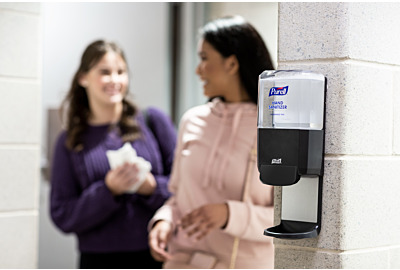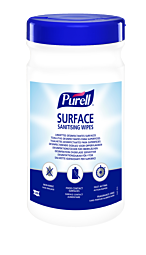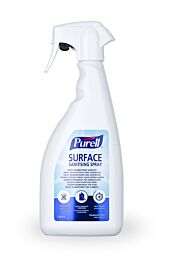In many places, it's the beginning of the semester, and in addition to the latest memories from holiday trips, many a student also brings a few silent companions back to the classroom in the form of viruses and germs. Given that we are increasingly surrounded by people again after ourwell-deserved time off, we should exercise a little caution and pay attention to increased hygiene. The steps that can help to minimise the spread of infections are summarised below in a few short tips for you.
A colorful potpourri of pathogens
Diseases such as flu, colds, COVID-19, gastrointestinal infections, strep throat and conjunctivitis are common in schools and universities. Outbreaks in the early months of teaching and childcare are so common that teachers and parents often refer to them as the "back-to-school plague". To add to the traditional mix, this year we are also seeing increases in the circulation of pathogens such as RSV and off-season colds, in addition to COVID-19 cases.
Why are schools and universities such germ factories?
Schools, colleges and universities typically have high traffic and shared spaces, with close contact between students and faculty. In addition, there are many surfaces that are touched frequently and can therefore be more heavily contaminated with germs. Combine these conditions with inadequate ventilation and poor hygiene habits (e.g. not keeping hands clean and not covering mouth and nose when coughing or sneezing), and this can lead to suboptimal cleaning and disinfection. All these factors can create a breeding ground for germs and viruses, which spread as colds and infections, especially during winter months.
How can institutions help prevent the spread of germs in their buildings and on campus?
Depending on the type of germ and the surface, germs can survive on surfaces for hours or even weeks. Routine cleaning and disinfection of surfaces is therefore part of a wider approach to preventing the spread of disease. Below are 4 hygiene tips that can help protect against common disease outbreaks.
Tip 1
Choose the right products to clean and sanitise surfaces.
For example, sanitisers for food contact surfaces or a sanitiser for other hard and soft surfaces. Read the product label carefully to ensure that it is effective against the most common germs and that it provides a thorough basic cleaning when used.
Tip 2
When sanitising, focus on surfaces that are most likely to be contaminated. In teaching buildings or on their grounds, there are many "hot zones" for germs located on surfaces. For example, on high-touch surfaces in shared spaces, such as handrails, door handles, light switches, lift buttons, work surfaces, tables and chairs, or in the cafeteria and common rooms.
Tip 3
Ensure that products are placed in a way that enhance their use. Consider placing surface sanitising wipes or sprays in areas where staff and students can help keep shared (and personal) surfaces extra clean between professional cleanings. Easily accessible hand sanitiser dispensers for all to use reduce transmission of germs and viruses.
Tip 4
Training and education to motivate students and staff to actively help can also play a big role in risk-free everyday teaching. Make sure it is widely known where germs can hide, how best to get rid of them and how to prevent surfaces from becoming permanently contaminated. In addition, encourage people to sanitise personal devices such as mobile phones, pens and computer keyboards regularly.
This way, the start of school and the semester can be made risk-free with a few simple tricks. For healthier learning and teaching!















